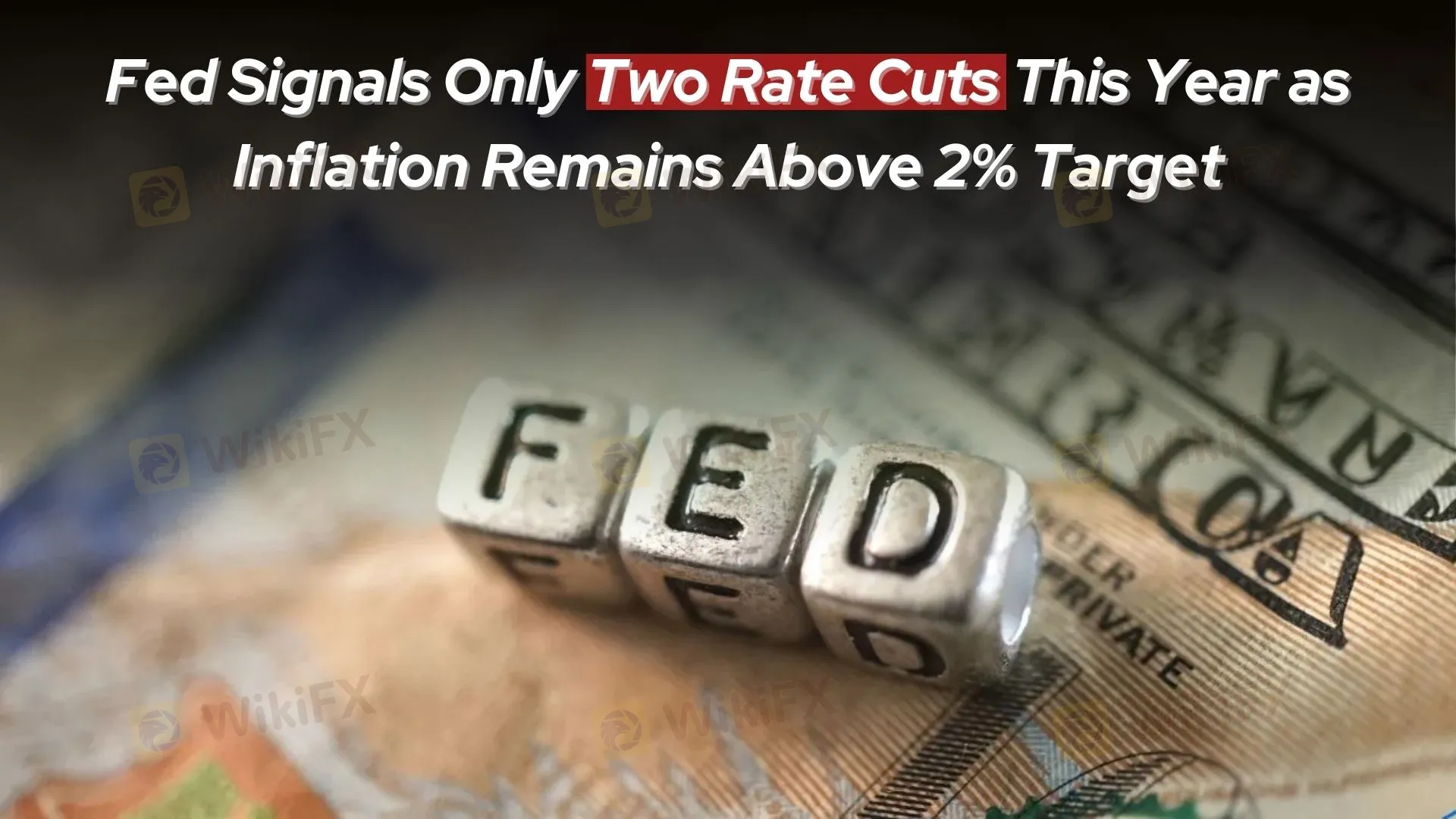简体中文
繁體中文
English
Pусский
日本語
ภาษาไทย
Tiếng Việt
Bahasa Indonesia
Español
हिन्दी
Filippiiniläinen
Français
Deutsch
Português
Türkçe
한국어
العربية
Fed Signals Only Two Rate Cuts This Year as Inflation Remains Above 2% Target
Abstract:The Federal Reserve prioritizes inflation control and economic stability, signaling limited rate cuts amid persistent price pressures.

Recently, statements from Federal Reserve officials have reignited discussions about the outlook for monetary policy. With U.S. inflation still exceeding the Feds 2% target, some officials have emphasized that, despite progress in easing price pressures, the conditions for rate cuts are not yet fully met. Against this backdrop, the Fed has hinted at only two 25-basis-point rate cuts this year, reflecting a cautious stance that has drawn widespread market attention.
Inflation Challenges and Policy Trade-offs
San Francisco Federal Reserve Bank President Mary Daly pointed out that while significant progress has been made in reducing inflation over the past two years, the current inflation level remains “uncomfortably high.” She stressed that the Feds primary goal is to bring inflation back to its 2% target, while executing policies thoughtfully to avoid excessive harm to the labor market.
Similarly, Richmond Fed President Thomas Barkin stated that the Federal Reserve needs clear economic signals before proceeding with rate cuts, such as inflation reaching the target or a significant weakening in demand. He noted that the labor market remains relatively healthy, and further slowing could destabilize the broader economy.
Rate Cut Outlook: Cautious but Flexible
Despite growing market expectations for rate cuts, Federal Reserve officials continue to express caution regarding the policy trajectory. Mary Daly emphasized that policy frameworks only provide a starting point for discussions, and actual policy adjustments must be informed by data and real-world economic conditions. She warned that premature rate cuts could reduce the Feds flexibility in dealing with future uncertainties.
Barkin echoed similar sentiments, reiterating the importance of achieving inflation targets. He highlighted how the rising U.S. Debt burden poses pressure on long-term interest rates, further underscoring the need for balance between fostering economic growth and controlling inflation.
Market Impact and Outlook
The Federal Reserve‘s indication of only two rate cuts this year has solidified expectations about the future path of monetary policy. While many anticipate policy easing later in the year, officials’ cautious tone suggests that the Fed will prioritize observing economic data before making further moves to avoid unnecessary economic disruptions.
With inflationary pressures still present and the labor market holding steady, the Fed‘s approach to rate cuts is likely to remain data-dependent. Over the coming months, critical economic indicators such as non-farm payroll data and the Consumer Price Index (CPI) will play a key role in shaping the Fed’s policy decisions. Market participants will need to closely monitor these data points to anticipate the Feds next steps.
Disclaimer:
The views in this article only represent the author's personal views, and do not constitute investment advice on this platform. This platform does not guarantee the accuracy, completeness and timeliness of the information in the article, and will not be liable for any loss caused by the use of or reliance on the information in the article.
Read more

Trading Market Profile: A Clear and Practical Guide
Market Profile is a powerful trading tool that clearly shows where market activity concentrates—enhancing your trade decisions and timing.

Technical Analysis Tools in Forex Trading
Are you aware of the technical analysis tools that greatly determine the forex market’s direction? What do these tools do and why do avid traders eye these every day? If not, then start becoming aware of these tools that greatly dictate your forex earnings over time. Without any further ado, let’s start discussing these tools and their impacts.
Vault Markets Review 2025: Live & Demo Accounts, Withdrawal to Explore
Vault Markets, a South African-based broker, has attracted much attention in recent days, particularly within its region. This online broker only offers access to focused trading opportunities on Indices, Currencies, Energies, and Metals, yet it shines on low minimum deposits plus various bonus programmes, which would encourage more investors, especially beginners, to trade with a small budget. However, Vault Markets operates outside of the authorized scope, so we don't consider it solid to trade with.

T4Trade Review 2025: Live & Demo Accounts, Withdrawal to Explore
T4Trade, established in 2021 and regulated by the FSA in the Seychelles, allows trading on a modest portfolio of over 300 instruments, spanning forex, metals, indices, commodities, futures, and shares, all accessible via the popular MetaTrader 4 and their proprietary WebTrader platforms. Notably, T4Trade offers a zero-commissions pricing model where both floating and fixed spreads are offered on its MetaTrader—flexible leverage up to 1000:1 to increase trading flexibility. T4Trade also introduces a copy trading service called “TradeCopier”, which enables traders who lack experience or time to join in the markets by copying the trades of seasoned professionals.
WikiFX Broker
Latest News
Global week ahead: Crunch time for trade talks as Trump's deadline nears
Top Wall Street analysts recommend these dividend stocks for regular income
Stock futures rise as U.S.-EU trade deal kicks off a hectic week for markets: Live updates
Samsung Electronics signs $16.5 billion chip-supply contract; shares rise
Does XS.com Hold Leading Forex Regulatory Licenses?
EU chief to meet Trump in Scotland in push to avoid a transatlantic trade war
Trump's trade deals and tariffs are on the chopping block in court. What happens next
AI is radically changing entry-level jobs, but not eliminating them
CNBC Daily Open: A week when everything happens
Samsung Electronics signs $16.5 billion chip-supply contract in boost to foundry business; shares rise
Currency Calculator


